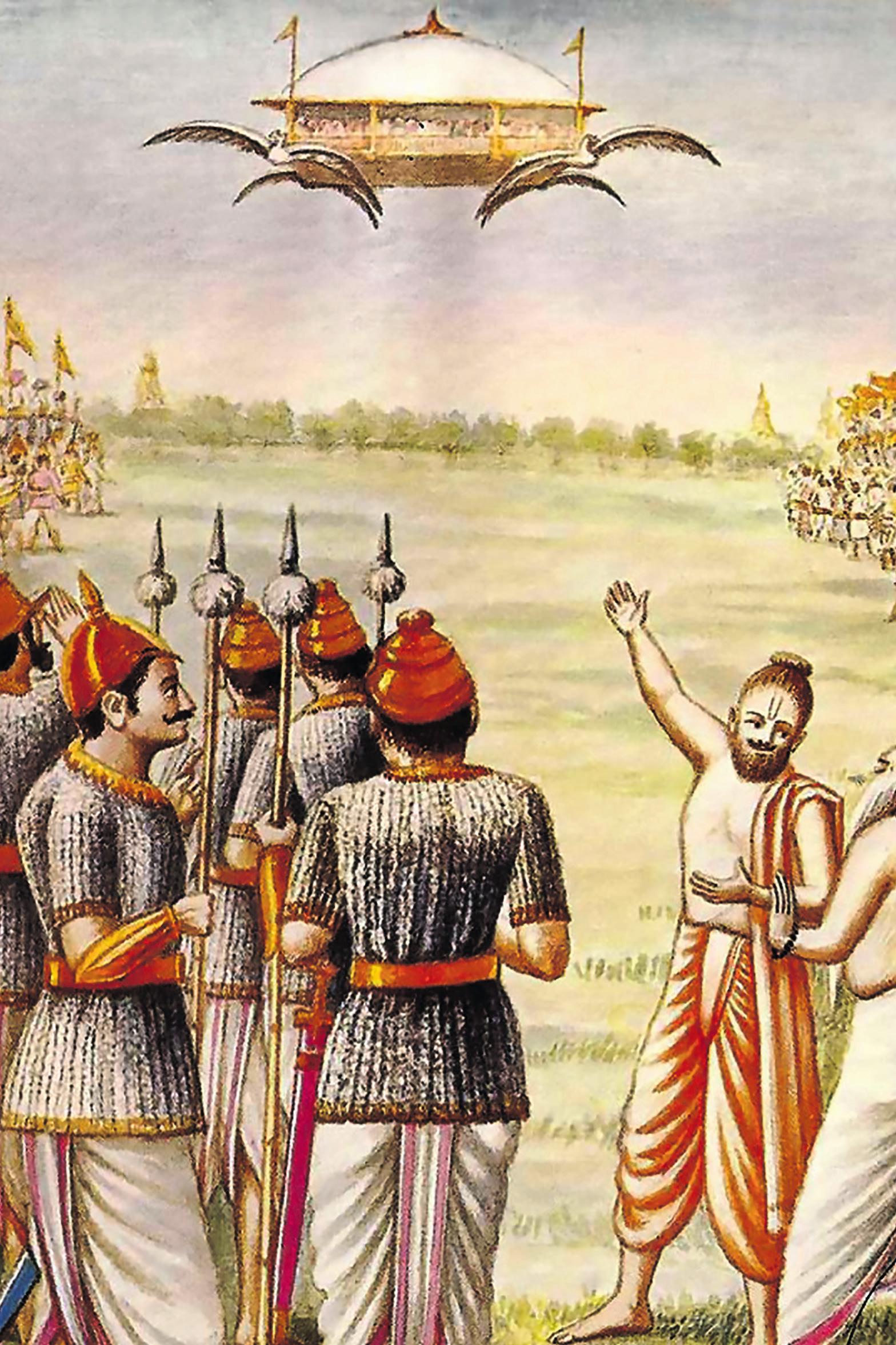
3 minute read
VYMAANIKA SHAASTRA
or Science of Aeronautics
Maharishi Bharadwaaja
Advertisement
Foreword
On 25-8-1952 the Mysore representative of the Press Trust of India, Sri N. N. Sastry, sent up the following report which was published in all the leading dailies of India, and was taken up by Reuter and other World Press News Services: “Mr. G. R. Josyer, Director of the International Academy of Sanskrit Research in Mysore, in the course of an interview recently, showed some very ancient manuscripts which the Academy had collected. He claimed that the manuscripts were several thousands of years old, compiled by ancient rishis, Bharadwaja, Narada and others, dealing, not with the mysticism of ancient Hindu philosophy of Atman or Brahman, but with more mundane things vital for the existence of man and progress of nations both in times of peace and war. “Mr. Josyer’s manuscripts dealt in elaborate detail about food processing from various indigenous materials like grass, vegetables and leaves for human consumption, particularly during times of famine. “One manuscript dealt with Aeronautics, construction of various types of aircraft for civil aviation and for warfare. He showed me plans prepared according to directions contained in the manuscript on Aeronautics of three types of aircraft or Vimanas, namely, Rukma, Sundara and Shakuna Vimanas. Five hundred slokas or stanzas dealing with these go into such intricate details about choice and preparation of metals that would be suitable for various parts of vimanas of different types, constructional details, dimensions, designs and
9
weight they could carry, and purposes they could be used for. “Mr. Josyer showed some types of designs and drawing of a helicopter-type cargo-loading plane, specially meant for carrying combustibles and ammunition, passenger aircraft carrying 400 to 500 persons, double and treble-decked aircraft. Each of these types had been fully described. “In the section giving about preparation and choice of metals and other materials that should go into such construction of aircraft, details were specified that the aircraft, (these metals are of 16 different alloys), must be “unbreakable, which cannot be cut through, which would not catch fire, and cannot be destroyed by accidents.” Details as to how to make these vimanas in flight invisible through smoke screens are given in Vimanasastra of Maharshi Bharadwaja. “Further description and method of manufacturing aircraft, which will enable pilots not only to spot enemy aircraft, but also to hear what enemy pilots in their planes were speaking, on principles akin to radar, have all been given in elaborate detail with suitable explanatory notes. There are eight chapters in this book which deal with construction of aircraft, which fly in air, go under water, or float on water.
TRAINING OF PILOTS
“A few slokas deal with qualifications and training of pilots to man these aircraft. These ancient types of aircraft are provided with necessary cameras to take pictures of approaching enemy planes.
10
Yet another set of slokas deals with the kind of food and clothing to be provided for pilots to keep them efficient and fit in air flying conditions. “Mr. Josyer said he was attempting to publish these manuscripts suitably translated in English. “Another manuscript dealt with ancient Indian architecture, fully illustrated to facilitate construction. This treatise is ascribed to Maharshi Narada, and gives elaborate details about choice of constructional material for various types of buildings, even 15 storeys high. Sectional drawing has also been provided. A few chapters deal with construction of villages, cities and towns, fortresses, palaces and temples. This manuscript is full of plans and engineering constructional details to guide engineers. “Yet another manuscript from which Mr. G. R. Josyer read out passages referred to preparation of imitation diamonds and pearls. He also showed me another remarkable manuscript which deals in detail about food processing for invalids, for youth and for old and debilitated persons.” A mild avalanche of letters blew towards us during the following days from all over India. One of the first was from James Burke of “Life International”, from Delhi asking if he could come and see the Mss. We replied, “Please wire 1000 dollars, and then come.” He was taken aback, and wrote that he thought people here felt honoured by being mentioned in “Life International,” but that we seemed to be different. We did not reply. Now James Burke is dead; and great “Life International” also is no more! Such is human evanescence! Miss Jean Lyon, journalist of Toronto and New York, wrote
11

